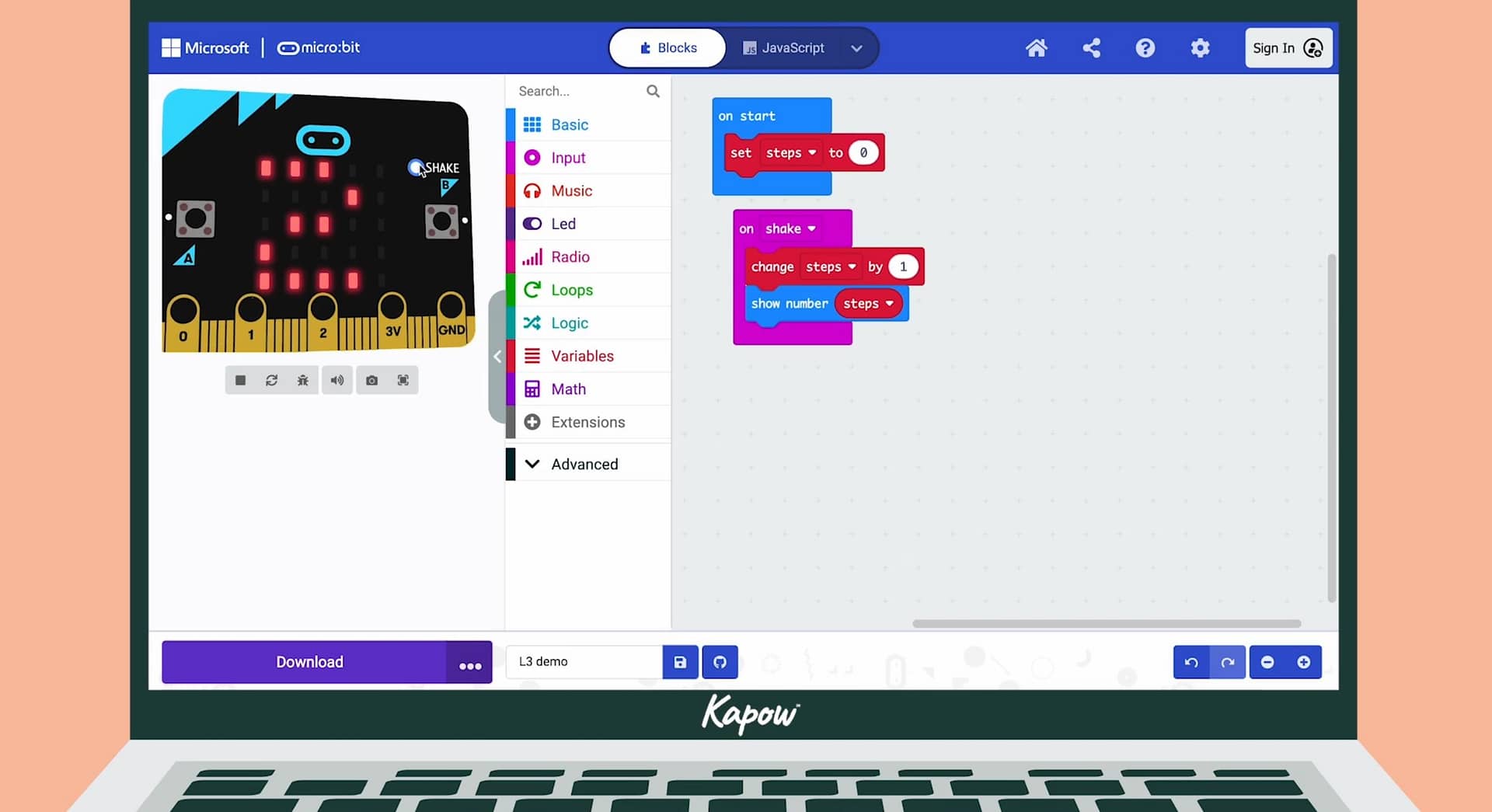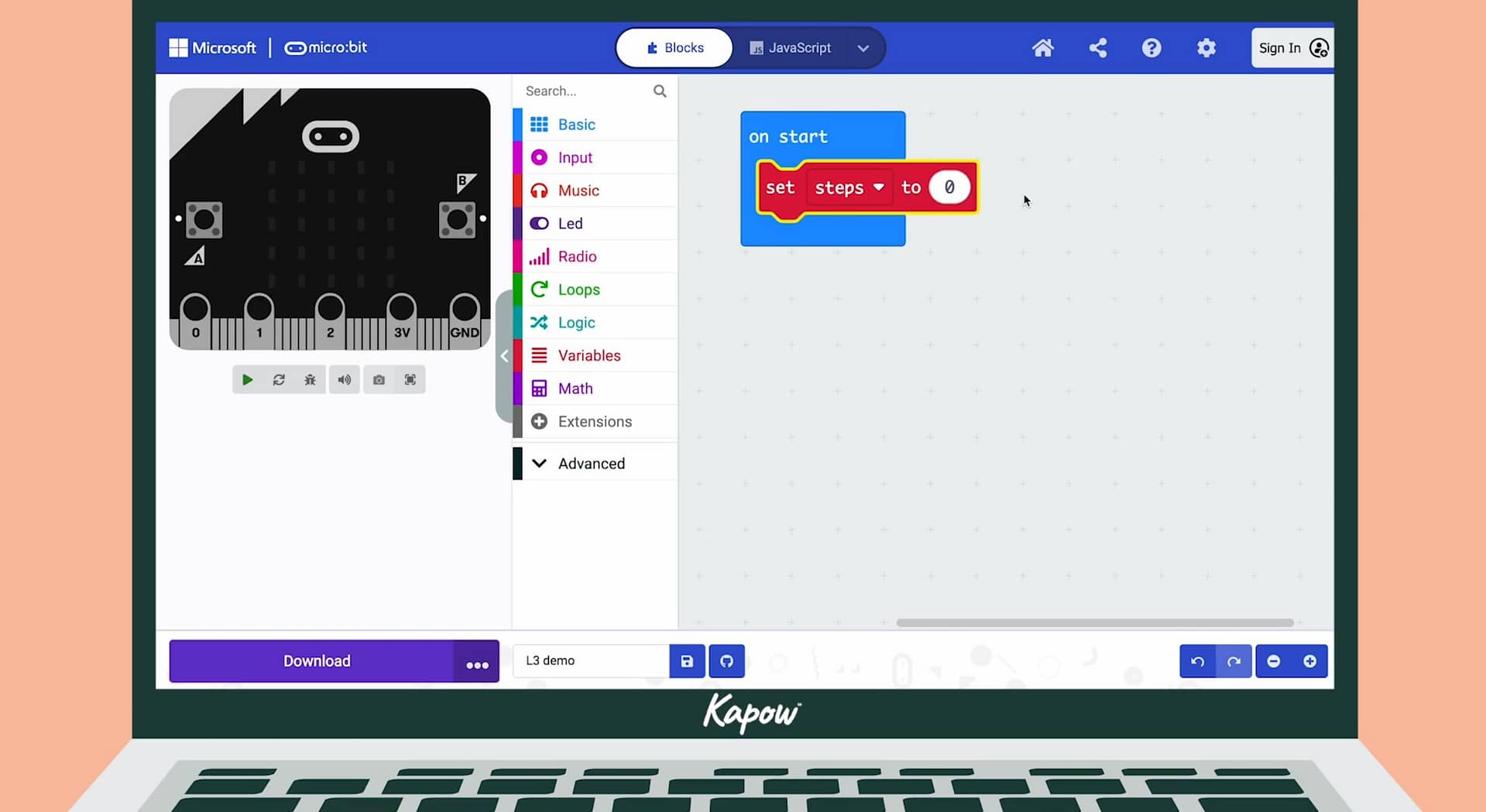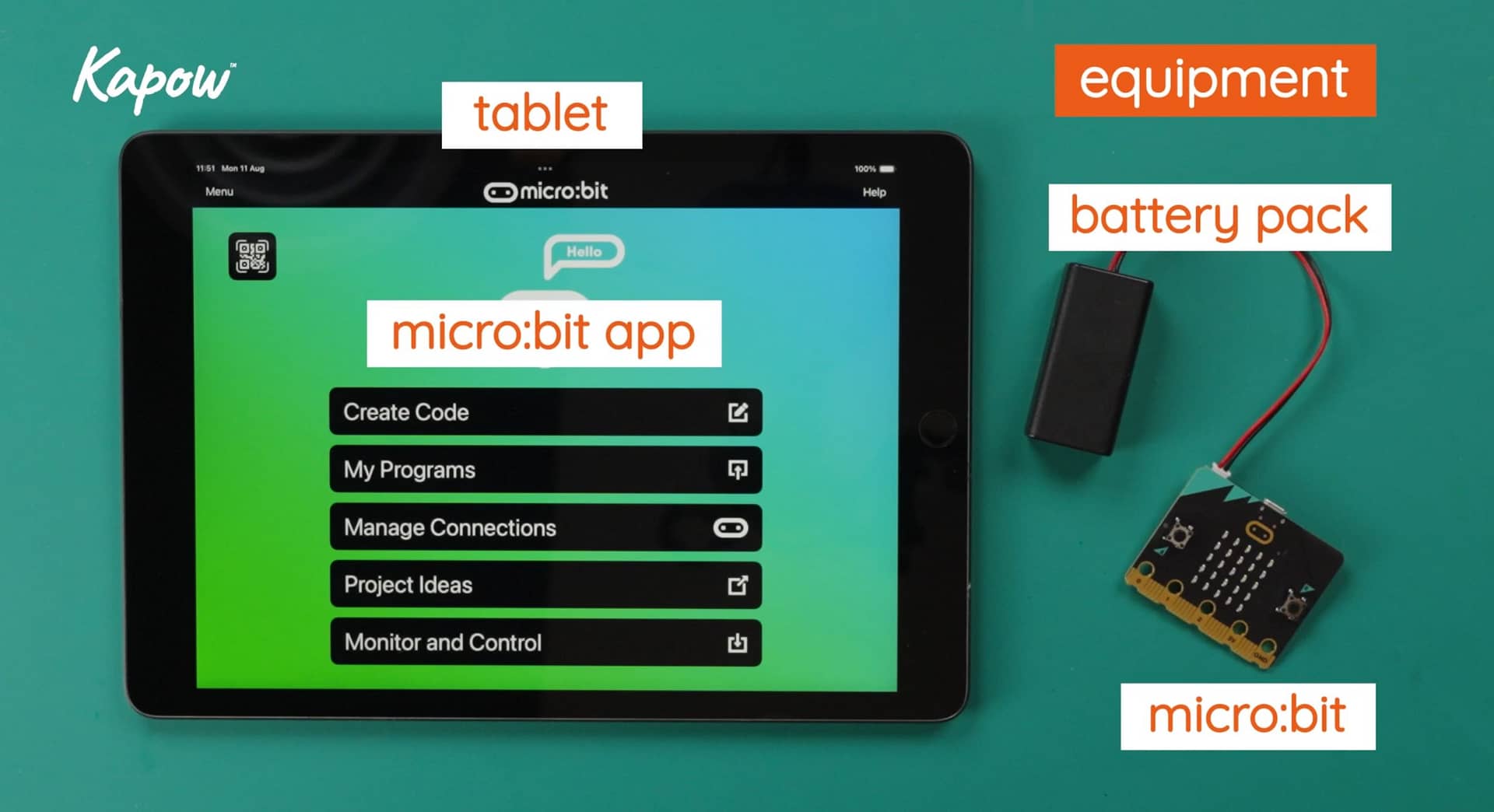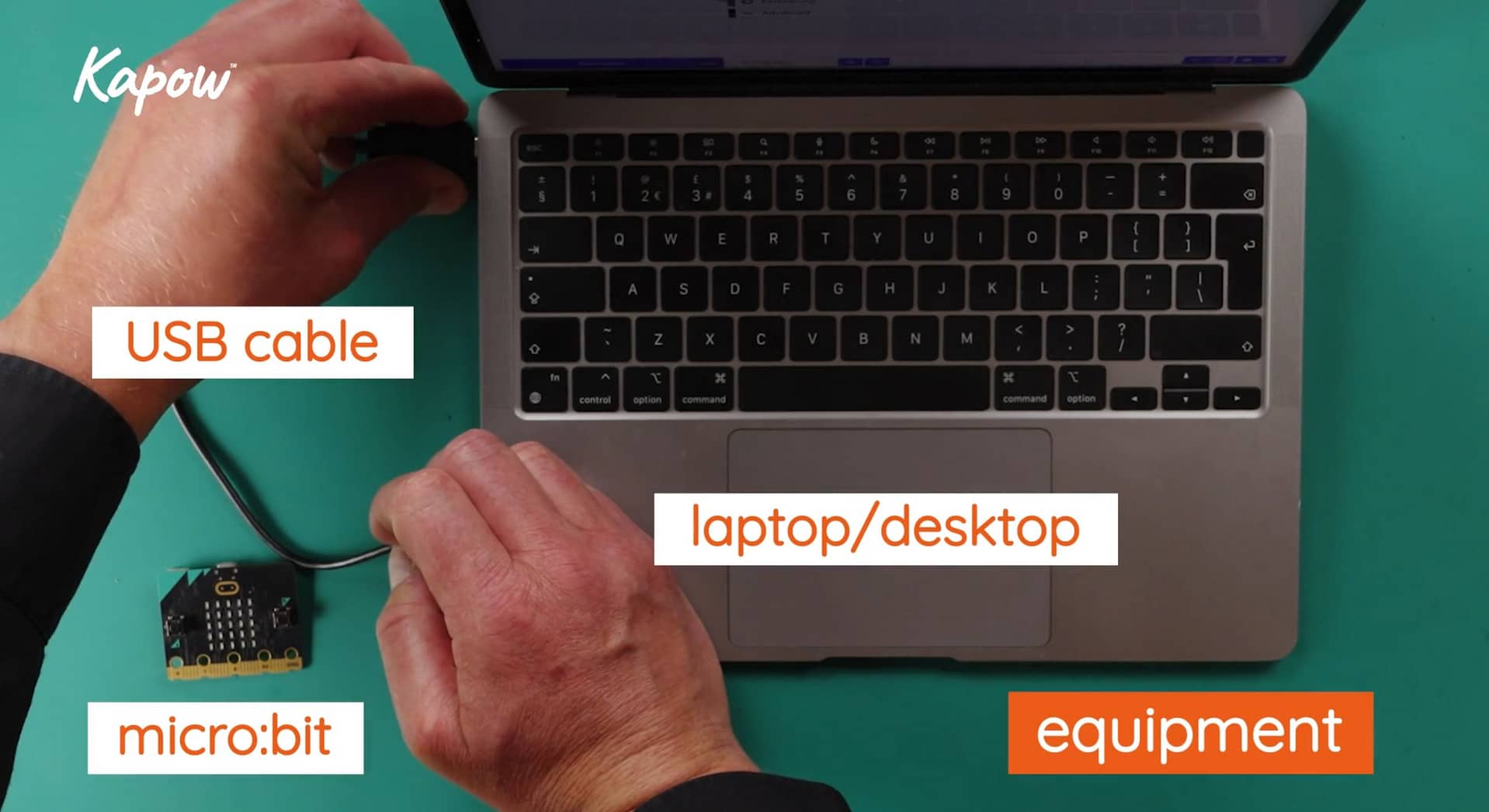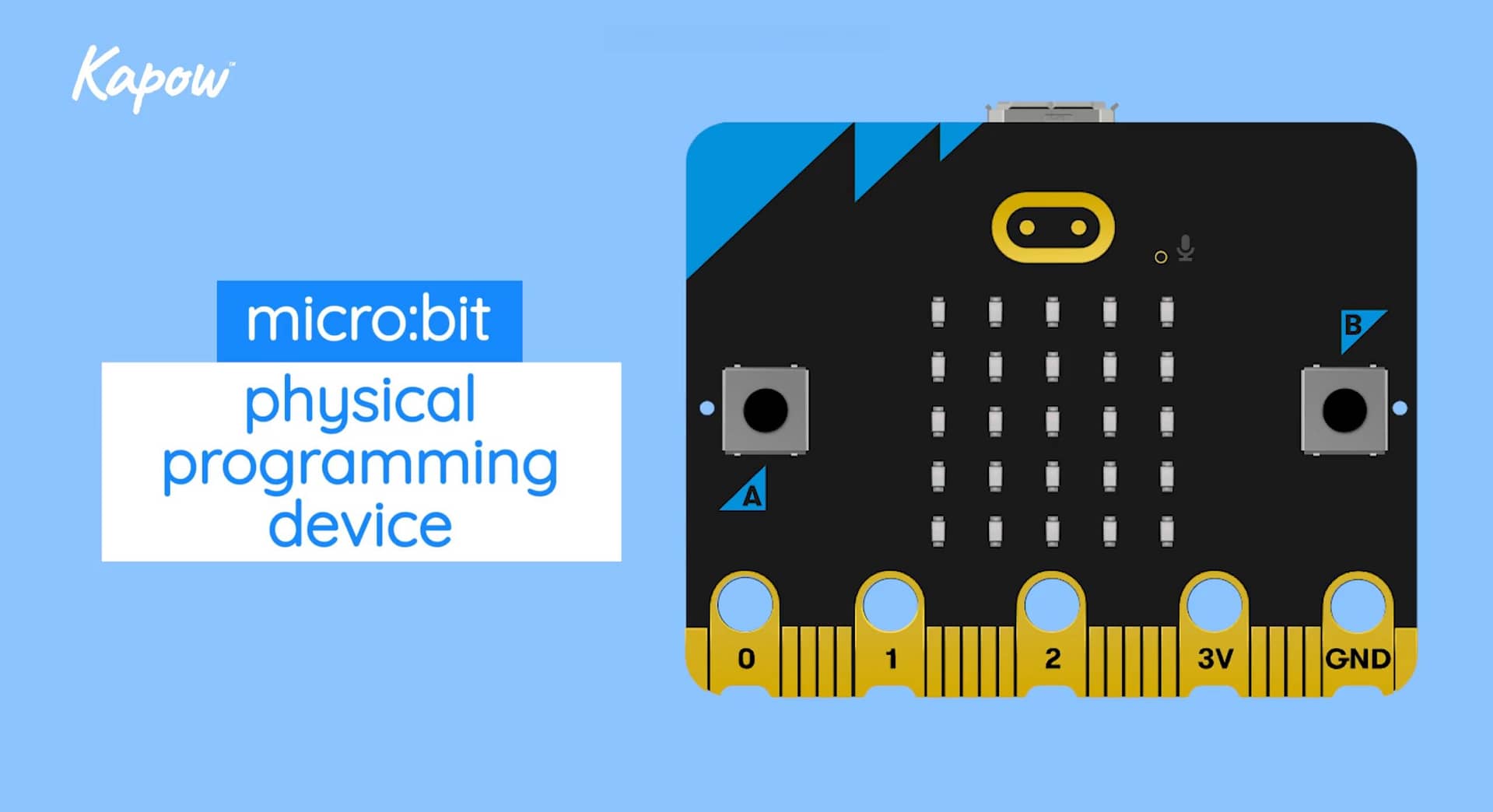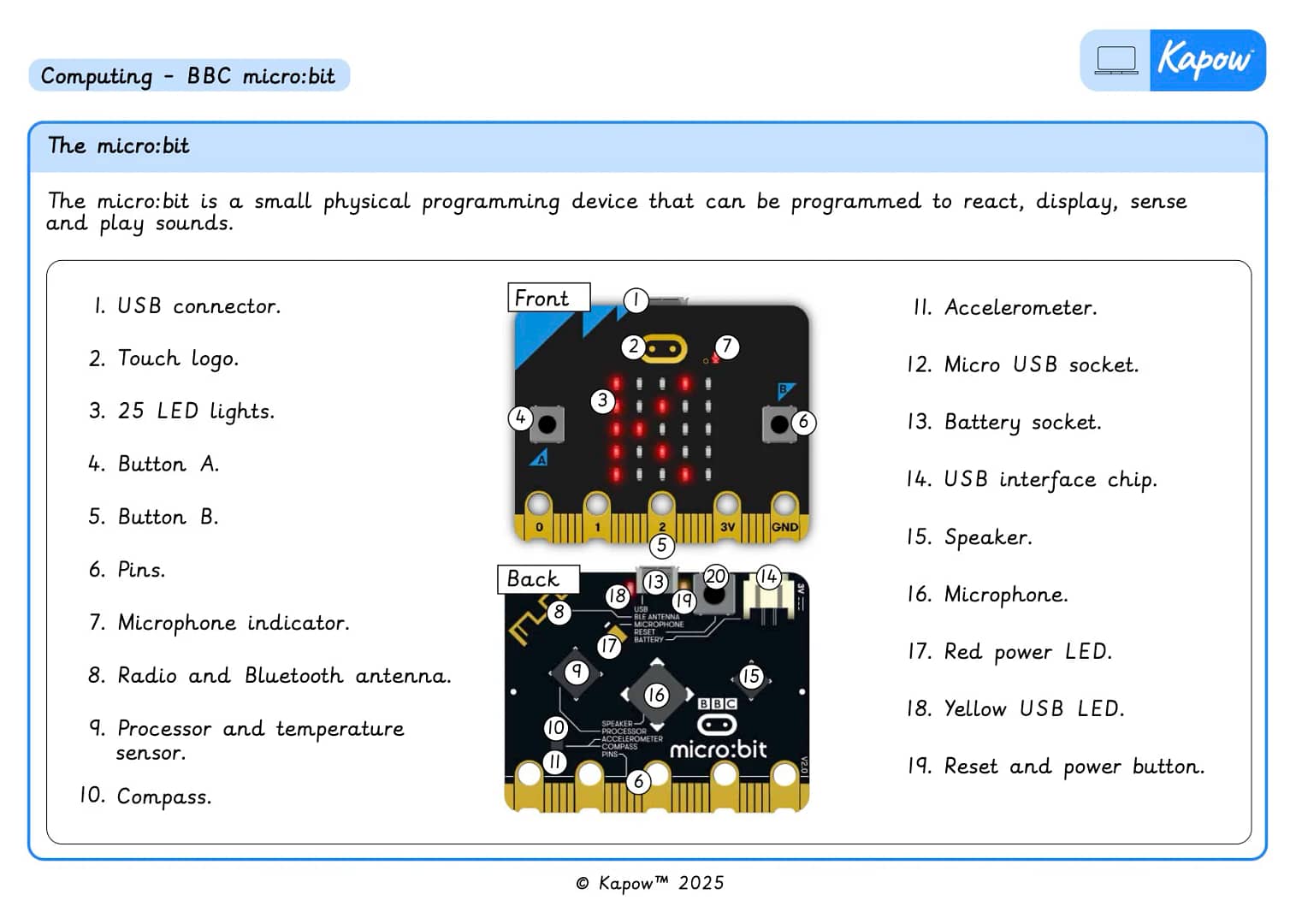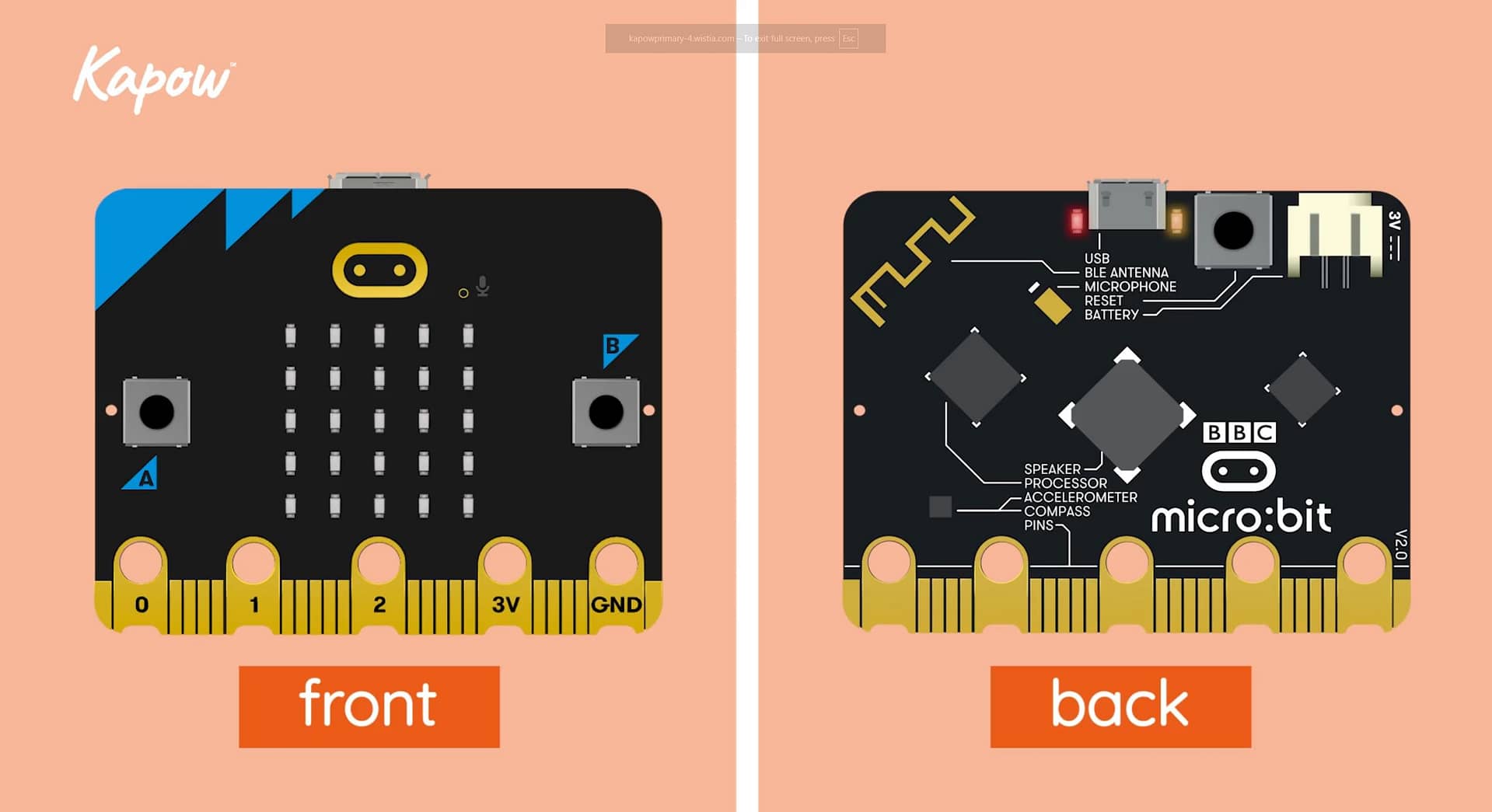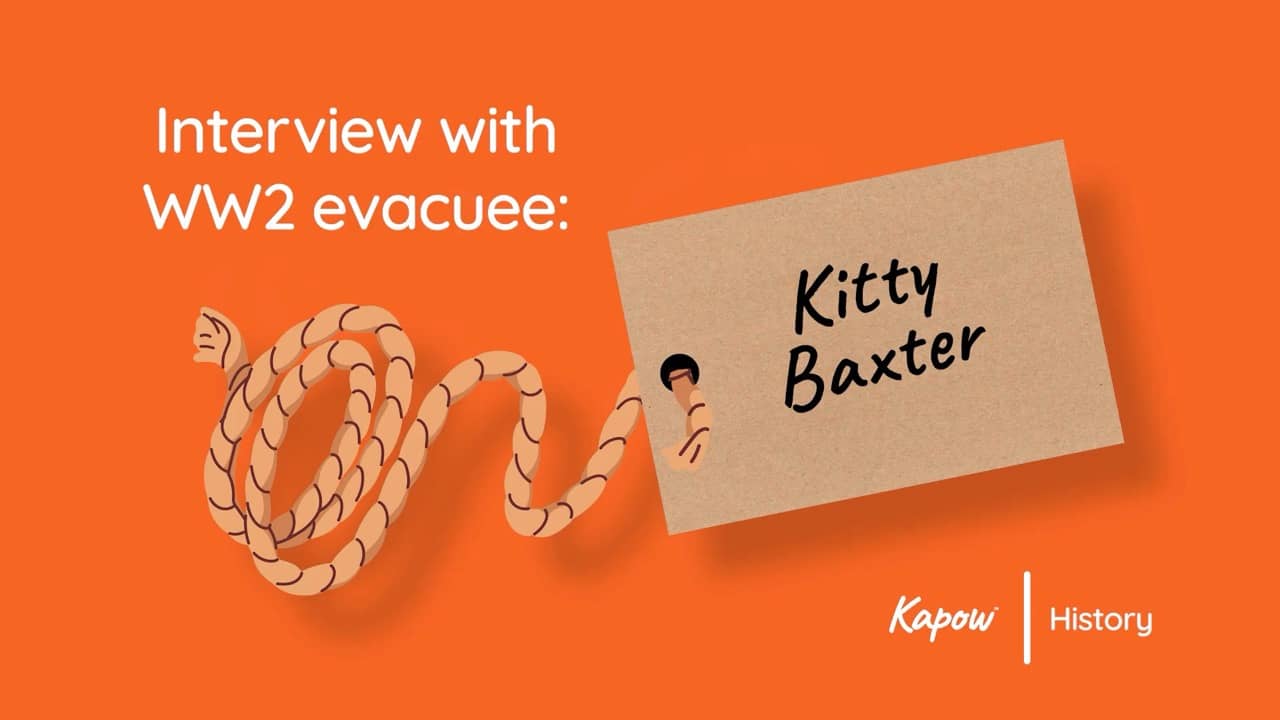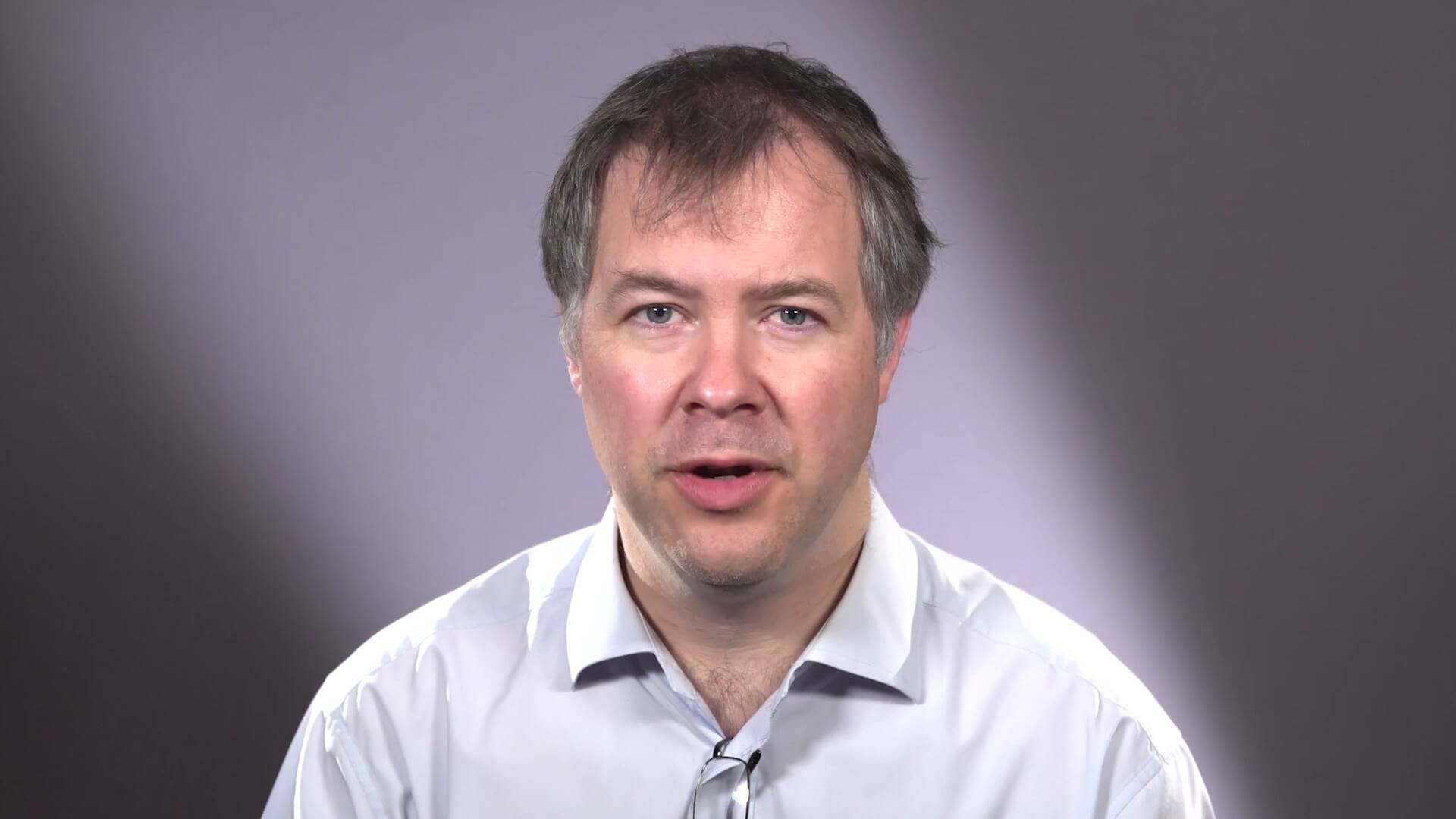This video shows pupils how to add an input to their micro:bit pedometer program so the step counter increases when the device is shaken.
year: Year 5
Pupil video: Programming a pedometer: creating a variable
This video shows pupils how to create a variable on the micro:bit to start building a pedometer program that counts steps.
Pupil video: Pairing the micro:bit (tablet version)
This video explains how to connect a BBC micro:bit to a tablet using Bluetooth, showing the pairing steps and how to transfer programs wirelessly.
Pupil video: Pairing the micro:bit (desktop/laptop version)
This video explains how to connect a BBC micro:bit to a computer using a USB cable, pair it through the software and transfer programs so it is ready to run.
Teacher video: Exploring the BBC micro:bit
This teacher video gives an overview of the BBC micro:bit, explaining its key features and how it can be used in the classroom to make programming meaningful and practical.
Knowledge organiser – Computing Y5: *New* Programming 2: BBC micro:bit
Pupil video: Exploring the BBC micro:bit
This video introduces pupils to the BBC micro:bit, showing its features such as the LED matrix, buttons, and sensors, and how these can be programmed to make the device interact with the world.
Pupil video: An evacuee’s experience
This video introduces Kitty Baxter as she shares her personal experiences of evacuation during World War 2
Teacher video: Introduction to sketchbooks
This archived Art and design scheme of work video is part of a lesson in which pupils explore how sketchbooks can be used as a creative tool rather than for completed pieces.
Children learn that sketchbooks are a safe place to experiment, make mistakes and develop ideas. They can use them to try different approaches, such as practising shading styles, experimenting with media, or sketching the same subject in several ways. Pupils are also encouraged to add short notes alongside their drawings, recording ideas and possible changes to help them reflect and improve. Through this process, sketchbooks become a space to practise skills, explore texture and detail, and build confidence in experimenting. By the end of the lesson, children will understand that sketchbooks are about creativity and growth, not perfection, and provide a record of their artistic development.
This video is part of Kapow Primary’s archived Art and design skills units.

